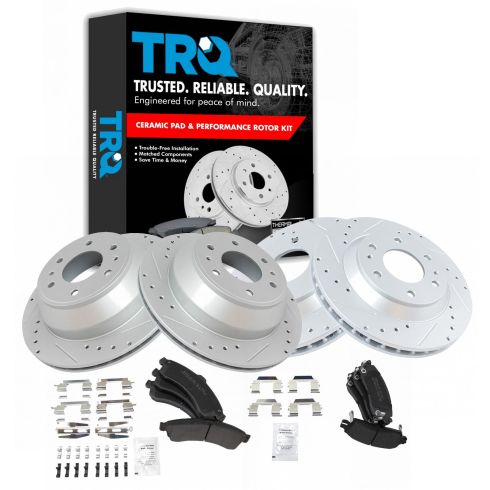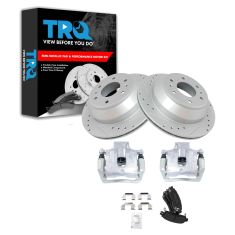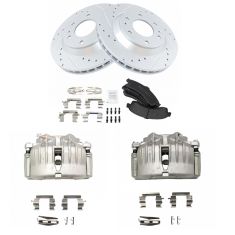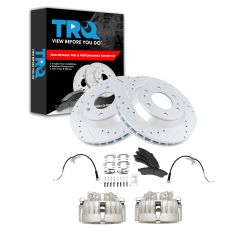1APBS00331-Chevrolet GMC Buick Olds Isuzu Front & Rear Semi-Metallic Performance Brake Pad & Rotor Kit TRQ Performance BKA12279

Replaces
2003 Chevrolet Trailblazer with 113 in. Wheel Base Front & Rear Semi-Metallic Performance Brake Pad & Rotor Kit TRQ Performance BKA12279

Product Reviews
Loading reviews
5.00/ 5.0
4
4 reviews
Great Buy
September 28, 2019
It was a great buy.
new brakes for envoy
October 14, 2019
part came very quickly, parts fit like they should. hoping they last a good while would buy from them again
Great
May 9, 2020
Great quality and fit as well as fast shipping
September 18, 2020
Great product and fast shipping
Customer Q&A
I have been having issues with surface rust with other rotors after a car wash. Will i have this issue with this set?
May 21, 2018
10
These rotors have a zinc coating on them that helps to prevent rust from forming on the hub part of the rotor. The breaking surface may get some surface rust on it especially after the vehicle isn't driven for a few days. This is normal and will be rubbed off by the brake pads after a few rotations. Thanks!!
May 21, 2018
Adam G
10
Not a problem at all with nakamoto semi metallic pads & disks.
May 23, 2018
Patrick S
Chevrolet is a registered trademark of General Motors Company. 1A Auto is not affiliated with or sponsored by Chevrolet or General Motors Company.
See all trademarks.



















